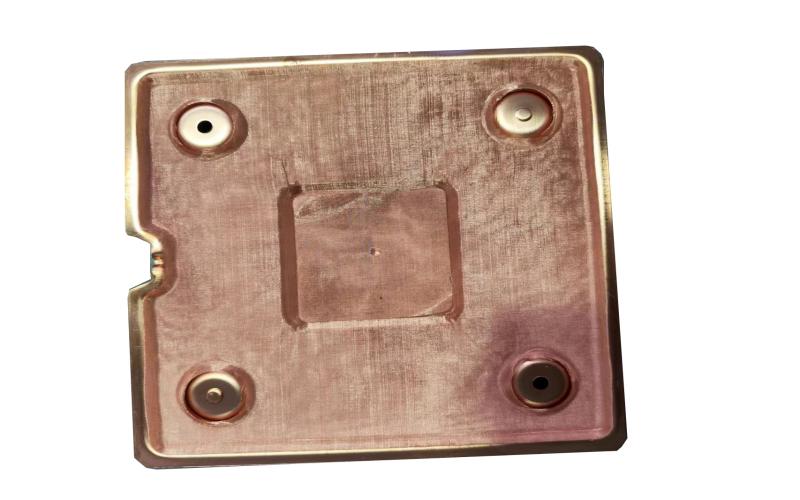The Power of Vapor Chamber Cooling: A Comprehensive Guide
Introduction
As technology continues to advance, cooling systems have become an essential component in various electronic devices. One cutting-edge cooling technology that has gained significant attention is vapor chamber cooling. In this article, we will delve into the world of vapor chamber cooling, exploring its working principle, benefits, and applications. Whether you're an enthusiastic gamer, a tech-savvy professional, or simply curious about the latest cooling solutions, read on to discover the wonders of vapor chamber cooling.
The Basics: Understanding Vapor Chamber Cooling
Vapor chamber cooling is an innovative thermal management solution that effectively dissipates heat in electronic devices. Unlike traditional cooling methods, such as heat sinks or fans, vapor chamber cooling harnesses the heat transfer capabilities of liquid-vapor phase change to enhance heat dissipation.
Vapor chambers consist of a sealed chamber filled with a small amount of working fluid, typically water or acetone. This fluid absorbs heat from the heat source, causing it to evaporate and form vapor. The vapor then travels to cooler areas within the chamber, where it condenses back into liquid form, releasing the absorbed heat. The liquid then returns to the heat source through capillary action, completing the cycle.
This continuous cycle of evaporation, condensation, and capillary action allows vapor chamber cooling to efficiently transfer heat away from the source, preventing overheating and maintaining optimal operating temperatures.
The Benefits of Vapor Chamber Cooling
Enhanced Heat Dissipation
Vapor chamber cooling offers superior heat dissipation capabilities compared to traditional cooling methods. The large surface area of vapor chambers allows for efficient heat transfer, reducing the risk of thermal throttling and extending the lifespan of electronic components.
Uniform Heat Distribution
One of the key advantages of vapor chamber cooling is its ability to distribute heat evenly across the entire chamber. This ensures that no specific areas of the device experience excessive heat, minimizing the risk of hotspots and thermal imbalances.
Compact Design
Due to their high thermal conductivity, vapor chambers can effectively dissipate heat in a compact form factor. This makes them ideal for space-constrained devices such as laptops, gaming consoles, and smartphones.
No Moving Parts
Unlike traditional cooling solutions, vapor chamber cooling does not rely on mechanical components such as fans or pumps. This eliminates the risk of component failure and reduces noise levels, resulting in a quieter and more reliable cooling system.
Applications of Vapor Chamber Cooling
1. High-Performance Gaming
Vapor chamber cooling has revolutionized the gaming industry by enabling high-performance graphics cards and processors to operate at optimal temperatures. By efficiently dissipating heat, vapor chamber cooling allows gamers to enjoy extended gaming sessions without the worry of overheating.
2. Data Centers and Servers
Data centers and server farms generate immense amounts of heat, leading to reduced efficiency and potential hardware failures. Vapor chamber cooling offers an effective solution by maintaining stable temperatures, ensuring the smooth operation of critical infrastructure.
3. Automobile Electronics
With the rise of electric and autonomous vehicles, the demand for efficient cooling solutions in automobile electronics has grown. Vapor chamber cooling provides reliable thermal management for components such as batteries, power electronics, and advanced driver-assistance systems (ADAS).
4. Aerospace and Defense
In the aerospace and defense sectors, where reliability and performance are paramount, vapor chamber cooling plays a crucial role. It ensures the efficient cooling of avionics systems, radar equipment, and other critical electronic components, even in extreme operating conditions.
5. Medical Devices
Vapor chamber cooling is also making its mark in the medical industry. It enables precise temperature control in medical imaging devices, diagnostic equipment, and life-saving technologies, ensuring accurate and reliable operation.
In Conclusion
As electronic devices become more powerful and compact, efficient cooling solutions are essential to prevent overheating and maximize performance. Vapor chamber cooling offers a cutting-edge thermal management solution, providing enhanced heat dissipation, uniform heat distribution, and a compact design. With its wide range of applications across industries such as gaming, data centers, and automotive electronics, vapor chamber cooling is undoubtedly a game-changer in the world of thermal management.

